How the servo is arranged and works
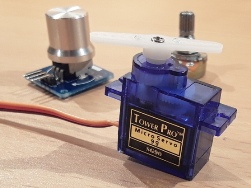 Low-current servos driven by arduino (micro servo motor) are widely used today in amateur robotics, they make small desktop machines and many other things interesting and useful in the household. Even just at the hobby level, such servos find a ton of diverse uses. Let's see what a servo is in its simplest form, how it is fundamentally designed and how it works.
Low-current servos driven by arduino (micro servo motor) are widely used today in amateur robotics, they make small desktop machines and many other things interesting and useful in the household. Even just at the hobby level, such servos find a ton of diverse uses. Let's see what a servo is in its simplest form, how it is fundamentally designed and how it works.
The word “servo drive” itself can be translated as “servo drive”. That is, it is such a driving device that contains an engine controlled by negative feedback, which allows precise movements with verified positioning of the working body. In principle, a servo drive can be called a motor, in the control system of which there is a position sensor of the working device (or just a shaft), the current parameters from which determine ...
The principle of operation of a self-regulating heating cable
 In the winter season, roofs, cornices, water, sewer and drainpipes, and many other communication elements, tend to freeze. The problem is that when the air temperature drops below zero, the water outside and inside many pipes quickly freezes. The resulting ice interferes with the functioning of communications, and ice on roofs and cornices is a separate, well-known and very acute problem. Self-regulating heating cable helps to solve all these problems.
In the winter season, roofs, cornices, water, sewer and drainpipes, and many other communication elements, tend to freeze. The problem is that when the air temperature drops below zero, the water outside and inside many pipes quickly freezes. The resulting ice interferes with the functioning of communications, and ice on roofs and cornices is a separate, well-known and very acute problem. Self-regulating heating cable helps to solve all these problems.
A self-regulating heating cable, as its name implies, is able to automatically adjust the degree of heating it provides. Moreover, different sections of the cable, being installed on various elements located at different temperatures, will have exactly the temperature that is necessary to maintain the correct temperature of the heated surface. The lower the temperature of the object to be heated, the more the corresponding section of the cable will warm up ...
How are gas leak detectors arranged and working?
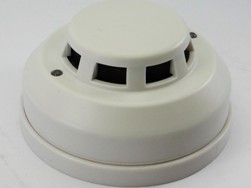 In the news reports, no, no, and sometimes there are reports that in some city a gas exploded at the entrance of a residential building or a fire occurred. As a rule, the cause is the leakage of a combustible gas mixture, consisting mainly of methane with additives (propane, butane, etc.) used in gas stoves and gas boilers. It would be good to prevent these misfortunes at the root, however, combustible gases are constantly being distributed, concentrated in rooms and lead to explosions and fires. The fault of all is human shortsightedness and imperfection of technology.
In the news reports, no, no, and sometimes there are reports that in some city a gas exploded at the entrance of a residential building or a fire occurred. As a rule, the cause is the leakage of a combustible gas mixture, consisting mainly of methane with additives (propane, butane, etc.) used in gas stoves and gas boilers. It would be good to prevent these misfortunes at the root, however, combustible gases are constantly being distributed, concentrated in rooms and lead to explosions and fires. The fault of all is human shortsightedness and imperfection of technology.
Meanwhile, there is a way to prevent such situations, or at least minimize their destructive consequences. The method is to install a gas leak detector in the room. The sensor will automatically detect the fact that the air has exceeded the concentration of a potentially hazardous gas, thus detecting a leak event and take the necessary steps to prevent...
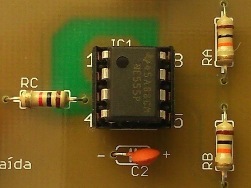 The advent of integrated circuits has made a real technological revolution in the electronics and IT industry. It would seem that only a few decades ago, for simple electronic calculations, huge tube computers were used, occupying several rooms and even entire buildings.
The advent of integrated circuits has made a real technological revolution in the electronics and IT industry. It would seem that only a few decades ago, for simple electronic calculations, huge tube computers were used, occupying several rooms and even entire buildings.
These computers contained many thousands of electronic lamps, which required colossal electric powers and special cooling systems for their work. Today, they are replaced by computers on integrated circuits. In fact, an integrated circuit is an assembly of many microscopic-sized semiconductor components placed on a substrate and packed in a miniature case.One modern human-sized chip can contain several million diodes, transistors, resistors, connecting conductors, and other components inside ...
Digital microscope - device and principle of operation
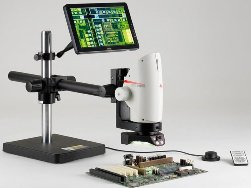 A digital microscope, like a conventional microscope, is used to optically magnify small objects that a person cannot see with the naked eye. However, unlike a conventional microscope, a digital microscope allows you to view magnified objects directly on a computer monitor or on your own LCD display.
A digital microscope, like a conventional microscope, is used to optically magnify small objects that a person cannot see with the naked eye. However, unlike a conventional microscope, a digital microscope allows you to view magnified objects directly on a computer monitor or on your own LCD display.
A digital microscope, being a desktop or portable device of a small size, perfectly conveys the boundaries, color and shape of the studied object, as well as its smallest elements (depending on the characteristics of a particular device). In practice, an image of a small object of interest can be obtained digitally in several ways. Most often this is realized by shooting with a digital camera. In the best (and expensive) case, the device includes a microscope, an optical adapter, a digital camera and special software ...
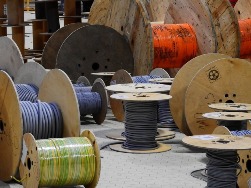 The process of manufacturing wires and cables is technologically implemented in several steps, the main of which are: drawing the workpiece, applying insulation, and the final stage is winding the finished product into bays. In fact, everything is somewhat more complicated, and at least two large workshops are allocated for cable production - the copper billet processing shop and the sheathing workshop.
The process of manufacturing wires and cables is technologically implemented in several steps, the main of which are: drawing the workpiece, applying insulation, and the final stage is winding the finished product into bays. In fact, everything is somewhat more complicated, and at least two large workshops are allocated for cable production - the copper billet processing shop and the sheathing workshop.
In the first workshop, the copper wire rod is drawn into wires and twisted, and already in the second workshop, the workpieces are passed through extrusion lines, where the cable acquires a complete insulated shape and is wound into coils. Let us, however, consider the technological process for the production of cables and wires in more detail and step by step on the example of the production of PVS brand wires. Raw material for copper veins serves as the so-called wire rod, which is a relatively thick copper billetdiameter of the order of 10 mm...
Plasma lamps - how they are arranged and work
 An amazing sight is a plasma lamp. A sealed glass bulb with a single high-voltage electrode installed inside, surrounded by an inert gas under almost atmospheric pressure. High voltage (from 2000 to 5000 V) is supplied to the lamp electrode from one of the terminals of the secondary winding of a pulse transformer operating at a frequency of 30-40 kHz, which is installed inside the plastic lamp housing. A plasma lamp transformer is similar to a line transformer, which can be found on an old monitor or a cathode ray tube television.
An amazing sight is a plasma lamp. A sealed glass bulb with a single high-voltage electrode installed inside, surrounded by an inert gas under almost atmospheric pressure. High voltage (from 2000 to 5000 V) is supplied to the lamp electrode from one of the terminals of the secondary winding of a pulse transformer operating at a frequency of 30-40 kHz, which is installed inside the plastic lamp housing. A plasma lamp transformer is similar to a line transformer, which can be found on an old monitor or a cathode ray tube television.
High voltage ionizes the gas molecules (usually neon) inside the bulb - it turns out the plasma, hence the name of the lamp - "plasma lamp". Multiple discharges, similar to small lightnings, are generated by moving gas ions. The color of these lightnings dancing around the electrode inside the bulb can be different, which depends on the type of gases that make up the mixture with which the bulb is filled ...
Magnetic resonance imaging (MRI) - principle of operation
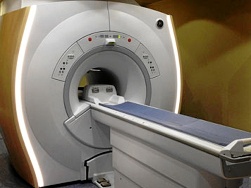 In 1973, an American chemist, Paul Lauterbur, published an article in the journal Nature, entitled “Creating an Image Using Induced Local Interaction; examples based on magnetic resonance. " Later, British physicist Peter Mansfield will offer a more advanced mathematical model for acquiring an image of an entire organism, and in 2003, researchers will receive the Nobel Prize for discovering the MRI method in medicine.
In 1973, an American chemist, Paul Lauterbur, published an article in the journal Nature, entitled “Creating an Image Using Induced Local Interaction; examples based on magnetic resonance. " Later, British physicist Peter Mansfield will offer a more advanced mathematical model for acquiring an image of an entire organism, and in 2003, researchers will receive the Nobel Prize for discovering the MRI method in medicine.
A significant contribution to the creation of modern magnetic resonance imaging will be made by the American scientist Raymond Damadyan, the father of the first commercial MRI apparatus and author of the work “Detecting a Tumor Using Nuclear Magnetic Resonance”, published in 1971. But in fairness, it is worth noting that long before Western researchers, in 1960, the Soviet scientist Vladislav Ivanov already outlined the principles of MRI in detail, nevertheless he received an author’s certificate ...
